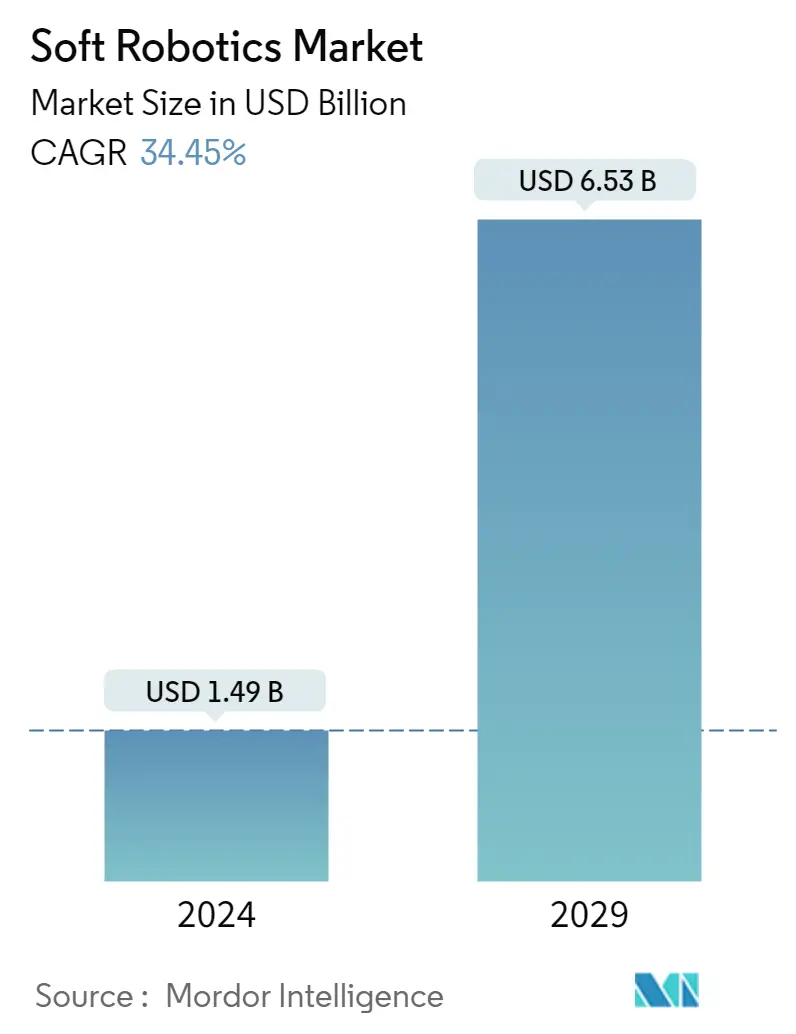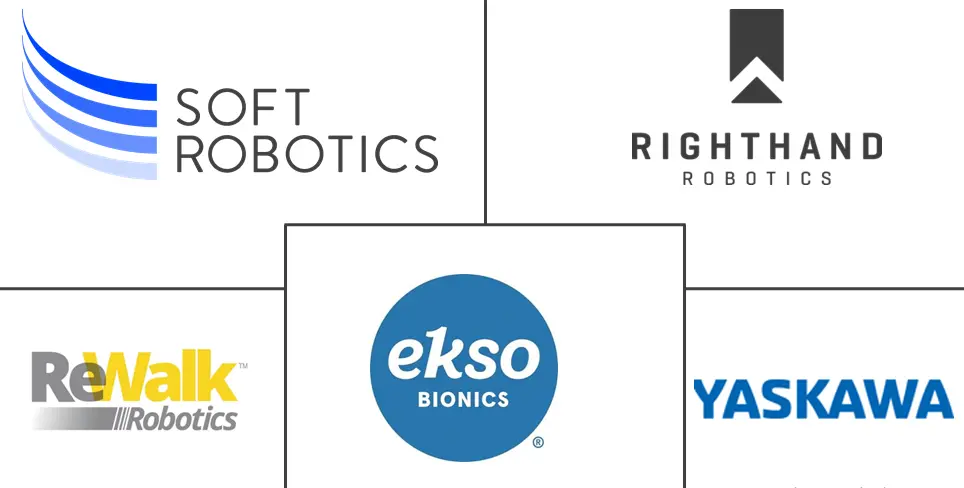Market Size of Soft Robotics Industry

| Study Period | 2019 - 2029 |
| Market Size (2024) | USD 1.49 Billion |
| Market Size (2029) | USD 6.53 Billion |
| CAGR (2024 - 2029) | 34.45 % |
| Fastest Growing Market | Asia Pacific |
| Largest Market | North America |
Major Players
*Disclaimer: Major Players sorted in no particular order |
Need a report that reflects how COVID-19 has impacted this market and its growth?
Soft Robotics Market Analysis
The Soft Robotics Market size is estimated at USD 1.49 billion in 2024, and is expected to reach USD 6.53 billion by 2029, growing at a CAGR of 34.45% during the forecast period (2024-2029).
Though soft robotics is still in its early stages, with the variety of benefits offered by soft robots compared to traditional robots, the penetration of soft robots is expected to grow dramatically over the forecast period. Also, the global COVID-19 pandemic has intensified the demand to automate to alleviate workforce challenges and develop operational and Food Safety in factory environments, which has led to the market's growth.
- Factors driving the development of the soft robotics market include the increasing demand for safety across the various end-user industries and the growing need for automation in food processing, e-commerce, etc. The ever-increasing investments/funding in research and development across multiple nations is fueling the growth of the soft robotics market.
- Exoskeletons are an emerging developing technology that has the potential to protect and save warehouse and manufacturing workers from shoulders, back pain, neck pain, and injuries related to heavy and repetitive lifting. Various researchers are developing soft, wearable robots that mimic muscle movements. In May 2021, a team of researchers at Queen's University in Canada developed an exoskeleton that reduces the metabolic cost of walking. The research is based on designing an exoskeleton that obtains over some of the brakings that occur during walking, thereby reducing the total metabolic cost of walking.
- Medical and non-medical exoskeletons are subjected to international safety regulatory requirements published by ISO (International Organization for Standardization)/IEC. For successful commercialization of these products, manufacturers must comply with these regulations. Also, the chances for approval are subjective. They can be achieved only if there is a reasonable assurance that the device is appropriate for its application. Because of these reasons and the lack of a single centralized regulatory body, the commercialization aspect is delayed, thus restraining the potential growth of the market.
- Various players have been focusing on developing soft, pneumatic-powered grippers ideal for fragile foodstuff that might be damaged by rigid robotics otherwise. Food has been a prime target for interest in automation during the pandemic due to labor shortages and fears of disease transmission. In June 2021, Soft Robotics company cited pandemic-related demand and raised USD 10 million for research and development in its revolutionary soft grasping, 3D perception, and AI technologies.
- The spread of the COVID-19 pandemic has led to delays in possible research undertaken by various universities and research institutions. This is because of extended lockdown across multiple countries and social distancing norms. Furthermore, many R&D projects were funded by various governments worldwide despite the Covid-19 crisis to support the contribution of robotics and automation to the industry and society. For instance, China's strategic plan of Made in China 2025 includes advanced robots among the top 10 core industries.
